"What’s behind you doesn’t matter” - a metaphor for both racing and life, emphasizing forward momentum and innovation.
Italian muscle cars represent a unique fusion of forward momentum, exquisite design, and engineering brilliance. Unlike their American counterparts, which prioritize brute force, Italian muscle cars balance high-performance engines with sophisticated handling and striking aesthetics.
Here, we drive into the world of Italian muscle cars, exploring their history, iconic models, modifications, and the enduring appeal of antique and old Italian cars among enthusiasts.
The Origins Of Italian Muscle Cars
The term "muscle car" traditionally evokes images of American classics like the Ford Mustang and Chevrolet Camaro. However, Italy has produced its own breed of high-performance vehicles that embody the spirit of muscle cars while maintaining a distinctly European flair.
The concept of an Italian muscle car emerged in the 1960s and 1970s, when automakers began combining large-displacement engines with lightweight chassis designs, resulting in cars that were both fast and agile.
Unlike American muscle cars, which often featured V8 engines in heavy bodies, Italian muscle cars typically employed high-revving V6 and V12 engines, advanced aerodynamics, and precision-tuned suspensions. These vehicles were designed to dominate both the road and the racetrack.
Not Everyone Agrees
Some purists and enthusiasts push back—sometimes quite strongly—against the label “Italian muscle car.” Their objections aren’t necessarily about nationalism or political correctness, but rather about automotive taxonomy, cultural identity, and engineering philosophy.
The term “muscle car” traditionally refers to American-made, mid-sized cars from the 1960s and 1970s with large-displacement V8 engines, rear-wheel drive, and relatively affordable price tags. Think Dodge Charger, Pontiac GTO, or Ford Mustang. These cars were built for straight-line speed, not finesse.

Italian performance cars, by contrast, are often smaller, more expensive, and engineered for handling and high-revving precision, not brute force. So calling a Ferrari or Maserati a “muscle car” can feel like cultural mislabeling.
That said, Italian automakers like Ferrari, Lamborghini, and Alfa Romeo emphasize balance, lightweight materials, and high-revving engines. American muscle cars often prioritize torque, displacement, and straight-line acceleration. Critics argue that lumping them together under the same label ignores these fundamental differences.
Italian cars—especially older models—have a reputation for being temperamental, expensive to maintain, and less reliable than their American counterparts. Some critics argue that a “muscle car” should be rugged and accessible, not a finicky thoroughbred.
Additionally, Italian cars are often seen as works of art, with design houses like Pininfarina and Bertone crafting sleek, sculptural bodies. Muscle cars, while iconic, are more utilitarian in design. To some, calling a Ferrari a muscle car is like calling a Michelangelo statue a gym bro.
The rejection of the term is, more often than not, about preserving cultural and historical accuracy. That said, some might argue that the term “muscle car” has evolved and can now be applied more loosely to any car with aggressive styling and a powerful engine. In that broader sense, cars like the Ferrari 812 Superfast or Lamborghini Aventador could qualify as “muscle cars with an Italian accent.”
But for traditionalists, that’s heresy.
Iconic Italian Muscle Cars
Several legendary models have cemented Italy’s reputation as a producer of high-performance muscle cars. These vehicles are celebrated for their power, rarity, and timeless designs.
1. Lancia Stratos HF
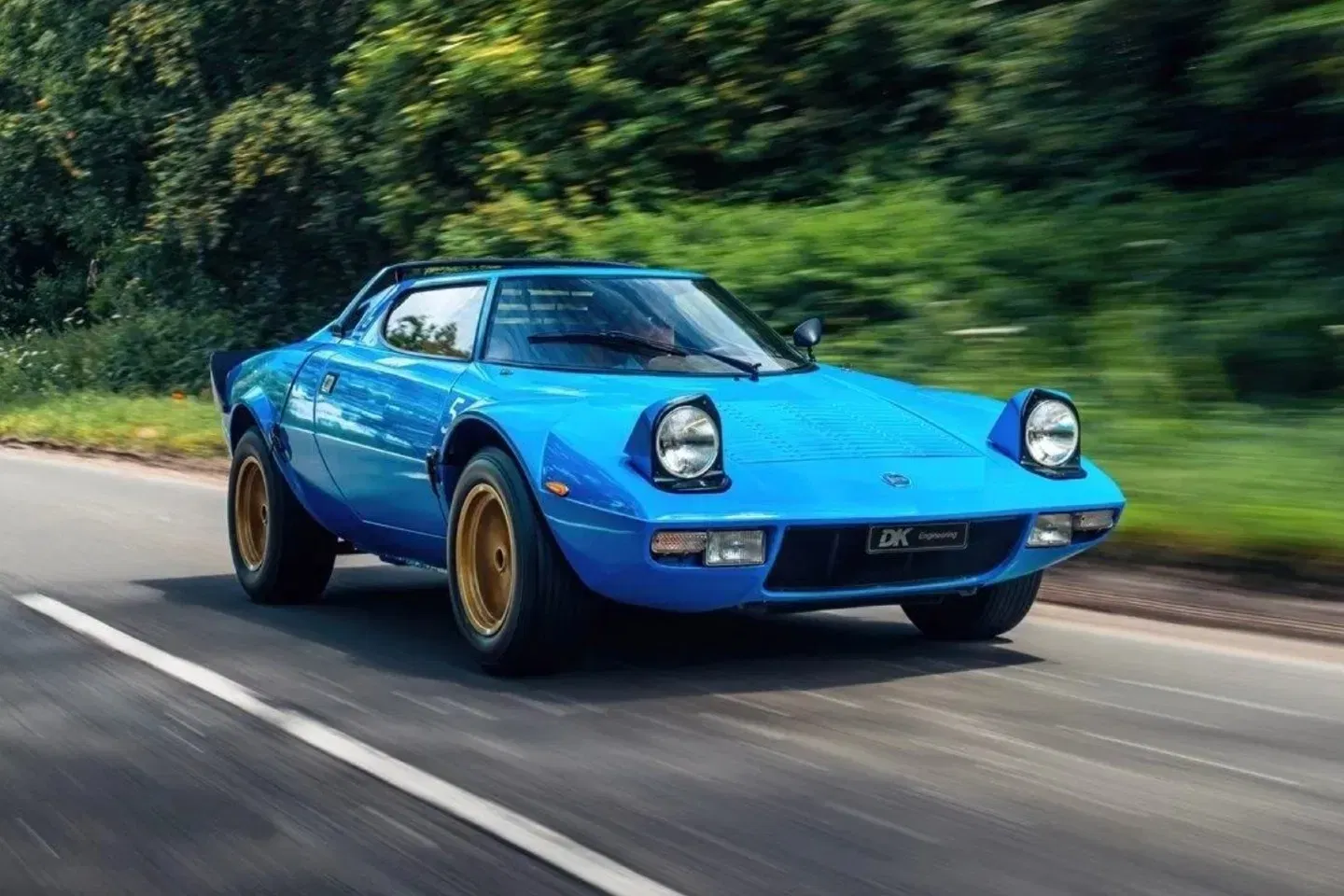
The Lancia Stratos HF is one of the most radical Italian muscle cars ever built. Designed specifically for rally racing, it featured a mid-mounted Ferrari Dino V6 engine, producing around 190 horsepower in its street-legal version.
Its wedge-shaped body and aggressive stance made it an instant icon. The Stratos dominated the World Rally Championship in the 1970s, proving that Italian muscle cars could outperform competitors on any terrain.
2. De Tomaso Pantera

The De Tomaso Pantera is perhaps the closest Italy ever came to producing a true American-style muscle car. Developed in collaboration with Ford, the Pantera housed a 5.8-liter Ford Cleveland V8 engine, delivering 330 horsepower.
Its sleek, low-slung body and mid-engine layout gave it exceptional performance, with a top speed of over 160 mph. The Pantera remains a favorite among collectors of old Italian cars, particularly those who appreciate its hybrid Italian-American heritage.
3. Maserati Ghibli

The Maserati Ghibli, introduced in 1967, was a grand tourer with muscle car tendencies. Its 4.7-liter V8 engine produced 310 horsepower, propelling it to a top speed of 154 mph.
Designed by Giorgetto Giugiaro, the Ghibli’s long hood and short rear gave it an aggressive yet elegant profile. Today, the Ghibli is a sought-after antique Italian car, revered for its blend of speed and luxury.
4. Alfa Romeo Montreal
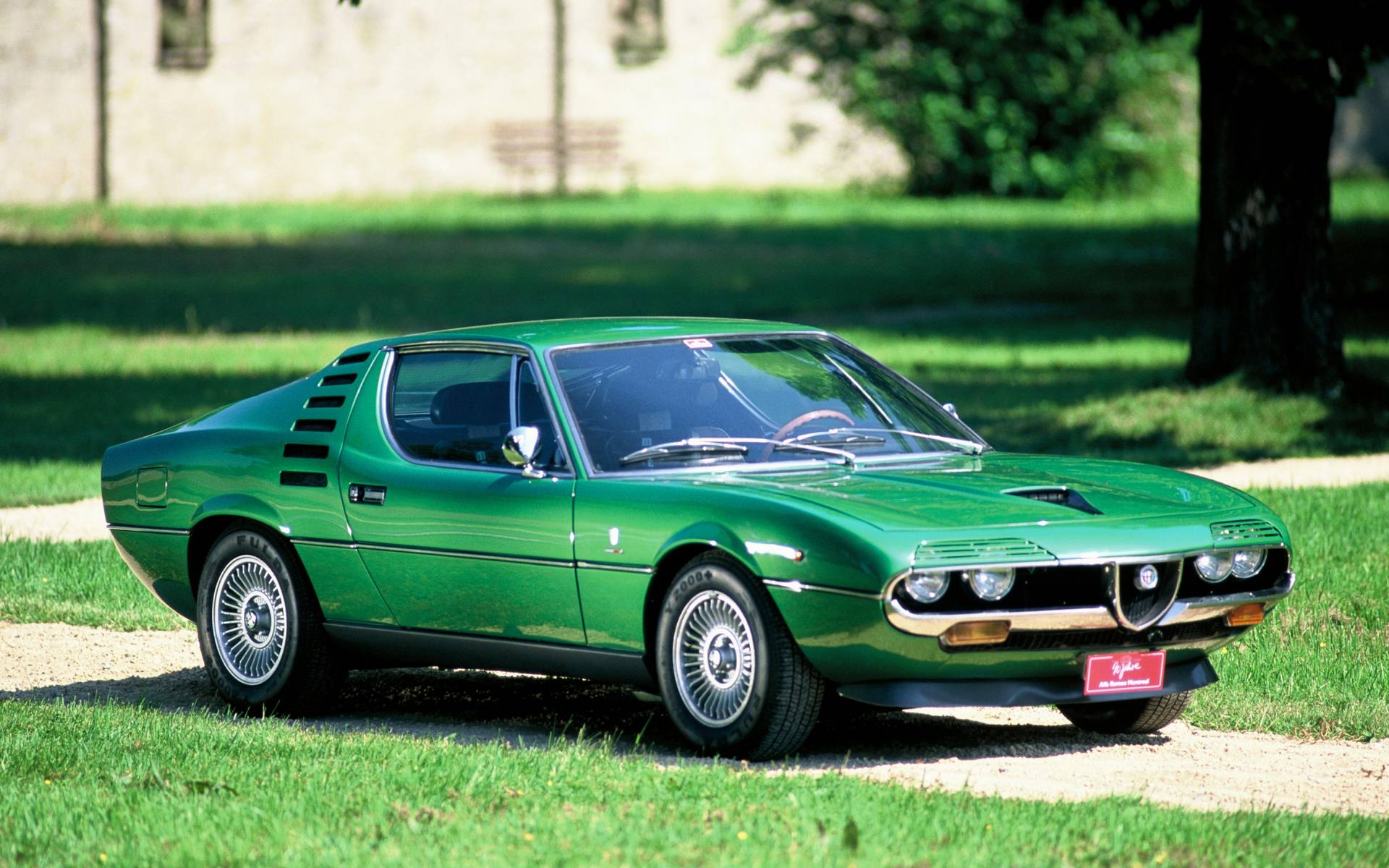
The Alfa Romeo Montreal was a bold experiment in combining Italian styling with muscle car performance. Its 2.6-liter V8 engine, derived from Alfa’s racing program, generated around 200 horsepower.
The Montreal’s distinctive design, featuring a NACA duct-inspired hood and hidden headlights, made it stand out in an era dominated by more conventional sports cars. Though not as powerful as some rivals, its rarity and unique character have made it a prized possession among enthusiasts of old Italian cars.
5. Iso Grifo
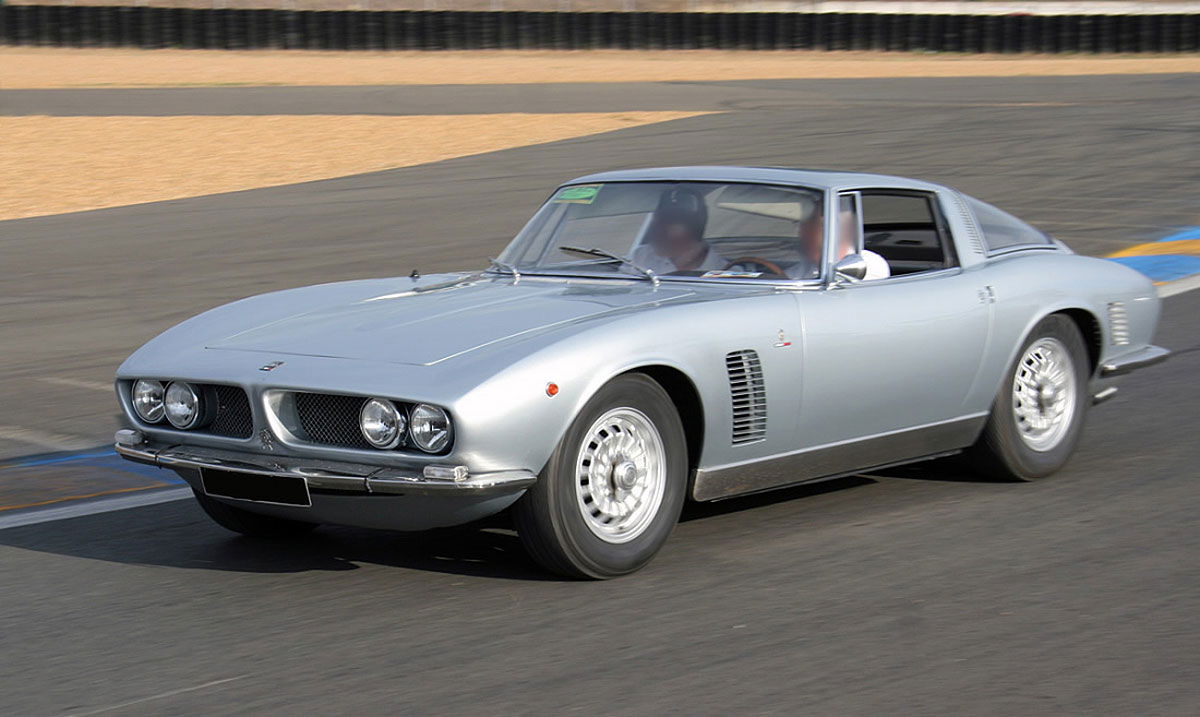
The Iso Grifo is a quintessential example of Italian design fused with American muscle. Introduced in 1965 by Iso Rivolta and engineered by former Ferrari mastermind Giotto Bizzarrini, the Grifo was a low-slung grand tourer that packed serious firepower under its sculpted hood.
Early models featured a Chevrolet 327 V8, while later versions boasted a monstrous 7.0-liter (427 cu in) big-block V8, producing up to 435 horsepower. That gave it blistering straight-line speed—on par with or exceeding many American muscle cars of the era.
Styled by Giorgetto Giugiaro at Bertone, the Grifo is one of the most desirable and collectible Italo-American hybrids ever built. With fewer than 500 units produced, it’s a rare gem that embodies the spirit of both continents.
6. Bizzarrini 5300 GT Strada
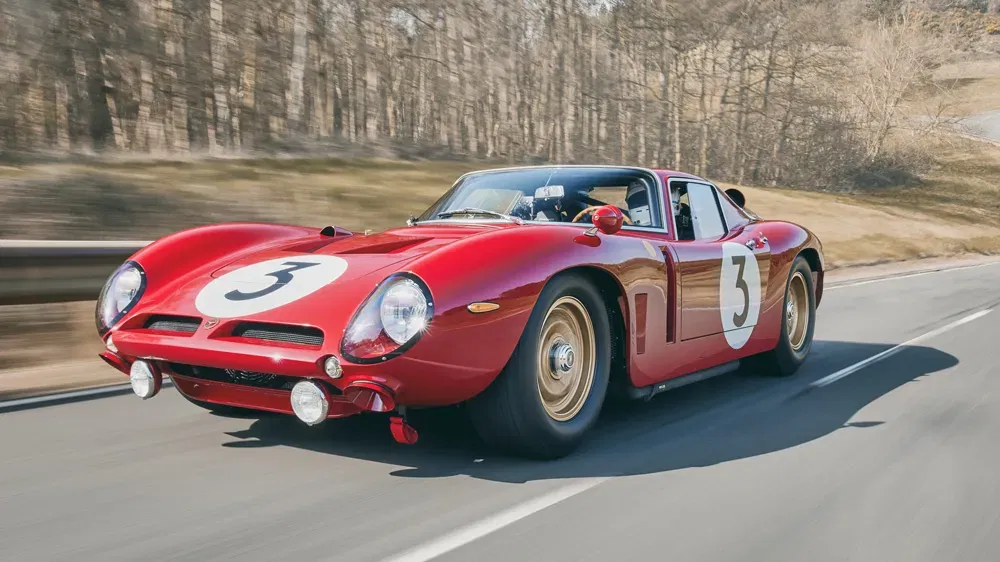
The Bizzarrini 5300 GT Strada is a glorious fusion of Italian engineering and American muscle, born from the mind of Giotto Bizzarrini, the former Ferrari engineer behind the legendary 250 GTO.
Introduced in the mid-1960s, the Strada was built on a lightweight aluminum body and powered by a 5.3-liter Chevrolet V8, delivering up to 400 horsepower. What made it particularly special wasn’t just the power. It was the front-mid engine layout, which gave it near-perfect weight distribution and razor-sharp handling.
It could hit 0–60 mph in under 6 seconds, a blistering pace for its time. With its low-slung, aggressive stance and racing pedigree, the 5300 GT Strada was a road-legal race car in every sense. Only a few hundred were made, making it a rare and coveted collector’s item today.
Modern renaissance Of Italian Muscle Through The Lens Of Restomods
7. MAT New Stratos
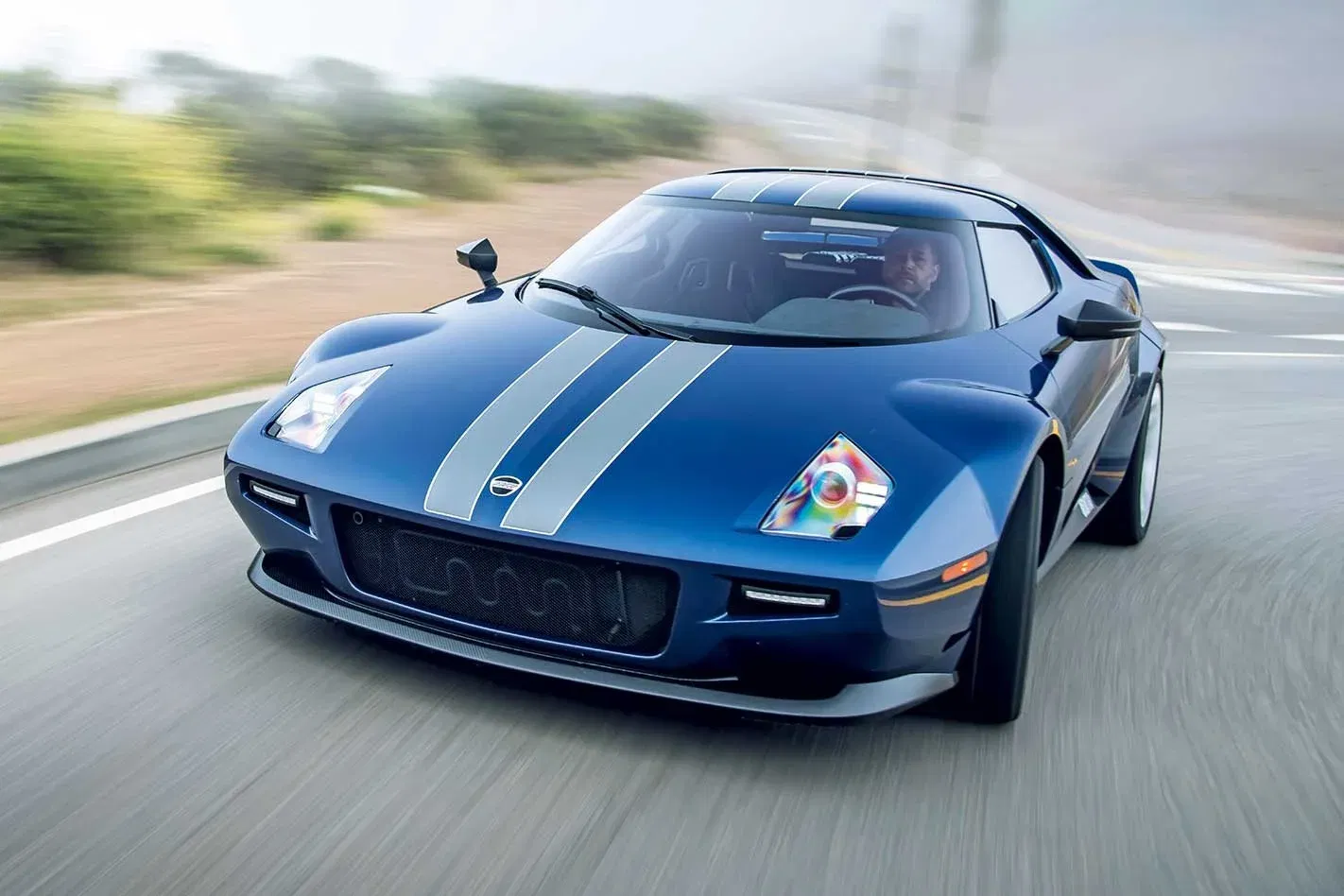
A spiritual rebirth of the legendary Lancia Stratos, the MAT New Stratos is a modern reincarnation of the legendary Lancia Stratos, paying homage to the iconic rally car while incorporating cutting-edge technology.
Built by German firm Manifattura Automobili Torino (MAT), the New Stratos is based on the Ferrari F430 chassis but features a completely redesigned carbon-fiber body that echoes the original’s wedge-shaped silhouette. Under the hood lies a modified Ferrari 4.3-liter V8, tuned to deliver around 540 horsepower, paired with a six-speed sequential gearbox for lightning-fast shifts.
The car’s lightweight construction and aggressive aerodynamics ensure a 0-60 mph time of just 3.3 seconds. Only a handful of units were produced.
8. Kimera EVO37 & EVO38
Kimera Automobili’s EVO37 and its successor, the EVO38, are love letters to Lancia’s Group B rally monsters. They are breathtaking tributes to the legendary Lancia 037, one of the most successful rally cars of the Group B era.
Created by Italian firm Kimera Automobili, these limited-production machines deliver a driving experience that honors the past while embracing modern performance.
The EVO37, unveiled in 2021, is a faithful yet updated reinterpretation of the Lancia 037 Stradale. Its carbon-fiber body retains the original’s aggressive, wedge-shaped profile but incorporates aerodynamic enhancements for improved downforce.
Beneath its striking exterior lies a supercharged 2.1-liter four-cylinder engine, producing 505 horsepower—far exceeding the original’s output. Paired with a six-speed manual transmission and a lightweight chassis, the EVO37 delivers razor-sharp handling, staying true to the 037’s rear-wheel-drive, analog driving character.
In 2024, Kimera unveiled the EVO38, an even more extreme evolution. Boasting 600+ horsepower, revised aerodynamics, and track-focused upgrades, the EVO38 pushes the limits of performance while retaining the raw, mechanical feel that made the 037 a rally icon.
Both models feature bespoke interiors with modern amenities, blending vintage aesthetics with contemporary comfort. With only 37 units of the EVO37 and an even rarer production run for the EVO38, these cars are instant collector’s items.
9. Totem Automobili GT Super

The Totem Automobili GT Super is a handcrafted Italian masterpiece that reimagines classic sports car design with cutting-edge technology. Inspired by the golden era of 1960s and '70s GT cars—particularly the Alfa Romeo Giulia TZ and Ferrari 250 GTO—the GT Super blends retro aesthetics with modern performance.
Built on a custom carbon-fiber monocoque chassis, the GT Super is ultra-lightweight yet incredibly rigid, ensuring razor-sharp handling. At its heart lies a supercharged 2.5-liter Alfa Romeo Twin Cam inline-four, tuned to deliver over 500 horsepower—a staggering output for an engine of this size.
Power is sent to the rear wheels through a six-speed manual transmission, ultimately engendering an engaging, driver-focused experience reminiscent of vintage racing cars.
Visually, the GT Super is a work of art, with flowing curves, aggressive haunches, and a low-slung stance that pays homage to Italy’s most iconic GT racers. Yet beneath its classic silhouette lies modern aerodynamics, including an integrated rear diffuser and functional vents for optimal cooling.
The interior is equally stunning, featuring hand-stitched leather, aluminum accents, and a minimalist dashboard that prioritizes the pure joy of driving.
Limited to just 15 units worldwide, the Totem GT Super is a rare and exclusive machine, built for collectors who appreciate the fusion of heritage and innovation.
10. Modena Automobili MA-01

Inspired by the Maserati Biturbo Shamal, the MA-01 is a modern supercar with a retro soul - a modern love letter to 1960s Italian racing legends.
Equally inspired by icons like the Ferrari 250 GTO and Maserati Tipo 61, its handcrafted carbon-fiber body features a long hood, muscular haunches, and a short rear —pure GT racing nostalgia with optimized aerodynamics. Underneath lies a bespoke 4.5-liter naturally aspirated V12, developed with Autotecnica Motori, screaming to 9,500 RPM while delivering 580 horsepower.
Mated to a six-speed manual transmission, it offers an unfiltered, driver-focused experience true to its analog roots.
The chassis combines a lightweight tubular steel frame with modern suspension for razor-sharp handling, while the interior mixes retro-inspired dials with Alcantara and titanium finishes. Limited to just 12 units, the MA-01 is a newly engineered classic, built for purists who crave the soul of 1960s racing with contemporary precision.
Modified Italian Cars: Enhancing Performance And Style
While factory-built Italian muscle cars are impressive, many enthusiasts take their passion further by modifying these vehicles for increased performance, handling, and visual impact. Modified Italian cars often feature engine upgrades, custom exhaust systems, suspension tuning, and bespoke bodywork.
Engine Modifications
One of the most common upgrades for Italian muscle cars is engine tuning. Swapping carburetors for fuel injection, installing turbochargers, or even engine swaps (such as fitting a modern Ferrari V8 into a classic De Tomaso Pantera) can dramatically increase power output.
Some builders opt for period-correct modifications, such as high-performance camshafts and upgraded ignition systems, to maintain authenticity while improving performance.
One of the most jaw-dropping examples is the Totem Automobili GT Electric restomod based on the classic Alfa Romeo Giulia GT Junior from the 1960s. Totem Automobili took the beloved Giulia GT and completely reimagined it with a bespoke electric powertrain. While purists might raise an eyebrow, the engineering is undeniably impressive.
Producing 518 horsepower and 693 lb-ft of torque, it races from 0 to 62 mph in just 3.4 seconds, making it to 250 miles thanks to a 50.4 kWh lithium-ion pack. A reportedly 75% of the original chassis was replaced with carbon fiber and aluminum components for rigidity and weight savings.
Suspension And Braking Enhancements
Old Italian cars often suffer from outdated suspension technology. Modern coil-over shocks, reinforced sway bars, and upgraded bushings can transform the handling of a vintage Italian muscle car.
High-performance brake systems, including larger rotors and multi-piston calipers, are also essential for these powerful machines to stop as effectively as they accelerate.
One standout example is the Alfa Romeo Giulia GT (Alfaholics GTA-R 290) restomod by Alfaholics, a UK-based specialist renowned for transforming classic Alfas into modern performance machines.
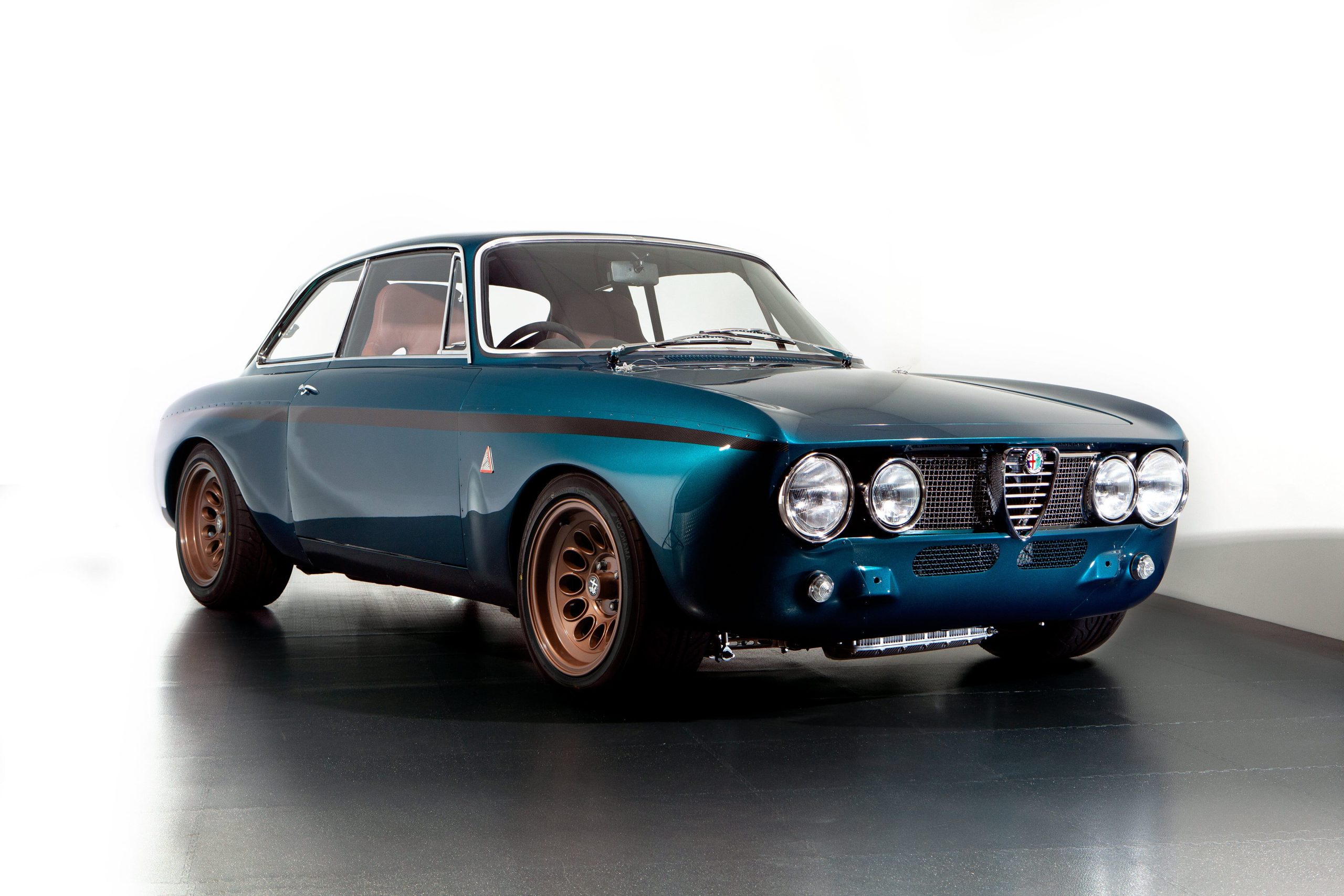
This car began life as a 1960s Alfa Romeo Giulia Sprint GT, but Alfaholics reengineered it into the GTA-R 290, a featherweight, track-capable restomod that retains vintage charm while boasting a fully adjustable billet aluminum suspension with custom geometry, lightweight titanium anti-roll bars and remote reservoir dampers for track-level precision, and independent rear suspension conversion (optional), a radical departure from the original live axle setup.
The braking upgrades include six-piston front calipers with ventilated discs, four-piston rear calipers, all paired with a modern dual-circuit master cylinder, and brake bias adjustment and race-grade pads for fade-free stopping power. The result is a 1600-pound Italian classic that can out-handle many modern sports cars, with razor-sharp feedback and confidence-inspiring braking.
Aesthetic Customizations
Beyond performance, many owners of modified Italian cars focus on aesthetics. Custom paint jobs, vintage racing liveries, and bespoke interior upholstery are popular ways to personalize these vehicles.
Some restomods (restored and modified classics) blend classic styling with modern components, such as LED lighting or digital dashboards, creating a unique fusion of old and new.
One of the most visually striking examples is the Bertone X1/9 owned and modified by Singaporean enthusiast Fabian Ng. This 1983 Italian mid-engine coupe underwent a full aesthetic transformation that turned it into a global showstopper.

It features custom wheel arches re-sculpted to accommodate wider wheels, giving the car a more aggressive stance. The extended front lip and slitter have been fabricated to blend seamlessly with the arches, improving both looks and aerodynamics.
The rear lip spoiler sports a subtle metal addition that adds a racy edge without overwhelming the original design. A full respray in a shimmering Pearlescent Metallic White Paint finish modernizes the car while honoring its vintage lines. eDspite some purists criticizing the departure from factory originality, the car was voted “Best Street X1/9 in the World” by the Global X1/9 Group in 2016.
Antique Italian Cars Preserving Automotive History
Antique Italian cars, particularly those from the 1950s to the 1970s, represent a golden age of automotive design and engineering. Preserving these vehicles requires meticulous attention to detail, as many parts are no longer in production.
Restoring an antique Italian car can be a labor of love. Many models were produced in limited numbers, so original parts are often exceedingly rare. Enthusiasts often rely on specialist workshops that fabricate custom components or scour international markets for NOS (New Old Stock) parts.
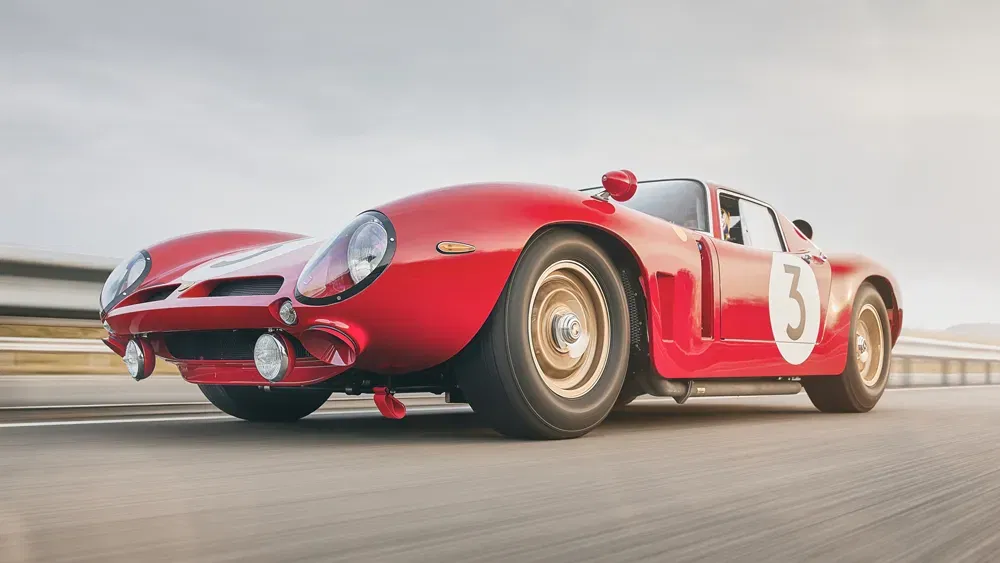
Authenticity is key in the classic car world, so preserving original paint codes, trim details, and engine specifications is crucial for maintaining value.
Well-preserved antique Italian cars have become highly valuable investments. Rare models like the Ferrari 250 GTO or Maserati A6GCS command multi-million-dollar prices at auctions. Even lesser-known Italian muscle cars, such as the Iso Grifo or Bizzarrini 5300 GT, have seen significant appreciation in recent years.
In the world of classic car auctions, few marques ignite passion quite like Ferrari, Lamborghini, Maserati, and Alfa Romeo, and their exploits under the gavel have made headlines across decades.
The crown jewel, the 1962 Ferrari 250 GTO, remains a legend on the track and at auction houses. With only 36 units ever made, one sold privately in 2018 for over $70 million, and another fetched $48.4 million at RM Sotheby’s—a public record at the time.
Meanwhile, the angular flair of early Lamborghinis, such as the Miura, introduced Italian supercar swagger to the world. A 1971 Miura SV crossed the block for more than $2 million, underscoring how 1970s excess has ripened into collectible prestige.
Maseratis, too, have their place in auction lore, particularly the 1956 Maserati 450S. This racing titan once fetched nearly $5 million, a price driven as much by its performance heritage as by its storied drivers. Even Alfa Romeo—often the underdog—has drawn surprising results.
The 1939 8C 2900B Lungo Spider, a pre-war grand tourer of jaw-dropping beauty, achieved $19.8 million at Pebble Beach in 2016, setting a benchmark for Italian pre-war cars. For collectors, owning an antique Italian car is as much about sound financial decision as it is about nostalgia.
Old Italian Cars: The Appeal Of Vintage Driving
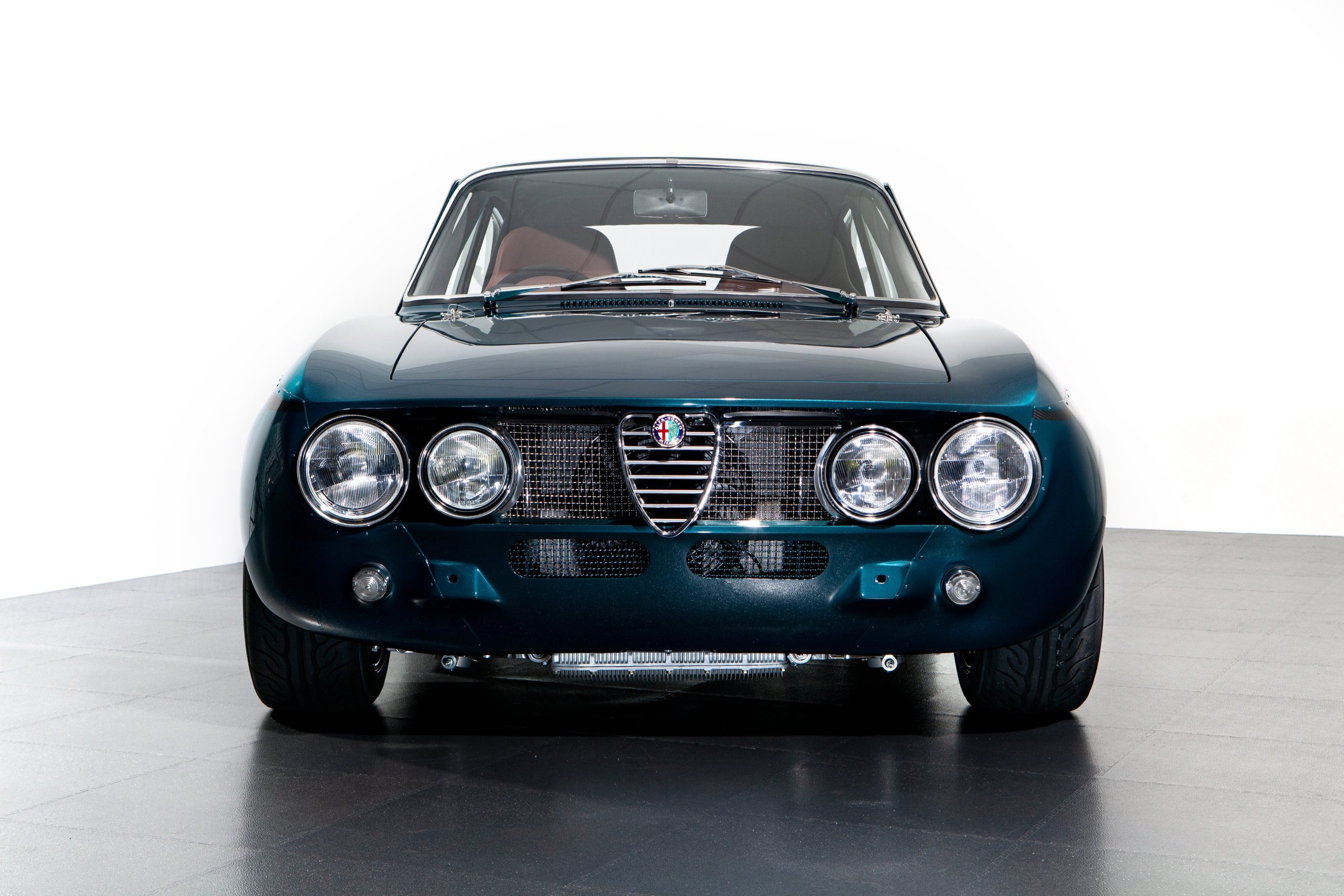
Driving an old Italian car is an experience unlike any other. The mechanical feedback, the roar of a naturally aspirated engine, and the tactile connection between driver and machine are qualities often missing in modern vehicles.
Classic Italian muscle cars were designed with a focus on driver engagement. The unassisted steering, manual transmissions, and finely tuned suspensions provide a raw, unfiltered driving experience. Cars like the Lamborghini Miura or the Alfa Romeo Giulia Sprint GTA are celebrated for their responsiveness and agility.
Old Italian cars have left an indelible mark on automotive culture. They have starred in countless films, graced the covers of magazines, and inspired generations of car designers. The Ferrari Daytona’s appearance in Miami Vice or the Lamborghini Countach’s poster-worthy status in the 1980s are testaments to their enduring appeal.
The Enduring Legacy Of Italian Muscle Cars

Not just turning heads on the street, Italian muscle cars have carved legacies on the track, unleashing fire and flair in some of the most dramatic motorsport showdowns.
Take the 1970s World Sportscar Championship, where Ferrari’s 512 S clashed with Porsche’s 917 in a thunderous rivalry. Though the German machine often had the upper hand, the 512 S, with its 5.0L V12, delivered unforgettable moments—like the rain-soaked 1970 Brands Hatch race, where Jacky Ickx masterfully tamed the scarlet beast to a hard-fought victory.
Meanwhile, Lancia’s Stratos HF stormed the rallying world in the mid-1970s and redefined what a muscle car could be. With a compact chassis and Ferrari Dino V6 engine, it was as aggressive as it was agile. Lancia dominated the World Rally Championship, claiming three consecutive titles from 1974 to 1976, blazing through snow, gravel, and tarmac with equal ferocity.
And then there’s the heart-thumping story of the Lamborghini Countach QV at the 1986 Cannonball One Lap of America, a road rally rather than an official race, but with no shortage of adrenaline. Pilot Joe Nastasi roared across the U.S. in the V12-powered wedge, turning the outlaw spirit of Italian muscle into pure folklore.
Even Alfa Romeo’s racing DNA came alive in the 1990s with the 155 V6 TI, a DTM warrior. In 1993, it stunned the German-dominated series by winning 12 of 20 races, thanks to Nicola Larini’s driving brilliance and the car’s 420-hp six-cylinder engine, revving to a glorious 11,500 rpm.
Italian muscle on the circuit isn’t just about speed but about charisma, heart, and a soundtrack that could make angels weep. As the market for classic and modified Italian cars continues to grow, the allure of these machines will never fade. As Ferrari once said, "Race cars are neither beautiful nor ugly. They become beautiful when they win."